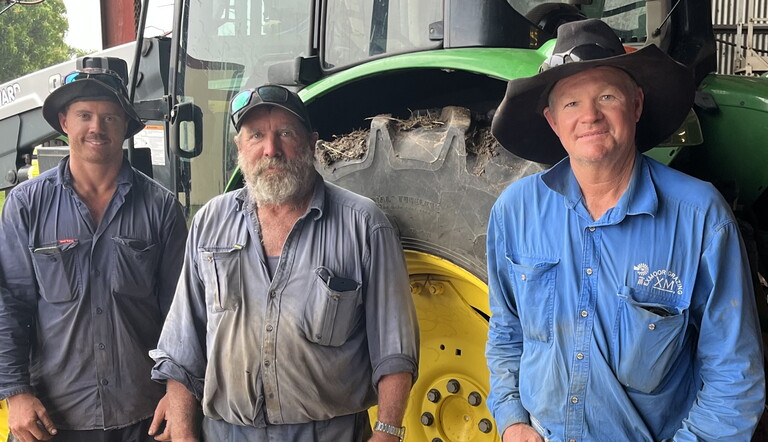
Growing cane operation winning the war on weeds

Watts Farming Company has grown its sugarcane production to encompass 640 hectares in the O’Connell River area near Proserpine, alongside its large cattle business.
The constant weed management on the property has almost eradicated guinea grass, while they also have to keep on top of vine weeds, bluetop, sicklepod, crowsfoot grass and barnyard grass.
“Feathertop rhodes grass also has popped up in some paddocks in recent years and that can require mechanical control if you let it get established,” said Farm Manager Steven Drinkwater.
“These tough weeds can reduce yields and require other costly control measures if not kept in check. If vine weeds are creeping out the top of the cane, we may need to look at late season aerial applications of herbicide – and we have buffer zones here due to the reef regulations, so it can be difficult.”
However, he said they were gradually winning the war on weeds and management was becoming easier.
“We have had to tidy up some areas and we are still contending with the weeds, but our herbicide strategies are definitely helping,” Steven said.
“We rotate herbicides and we also spot spray and ensure we keep surrounding areas clean.”
He said the addition of Palmero® TX herbicide in recent times, used as a rotational partner with Bobcat® i-MAXX, Bobcat® Combi and other herbicides, had proved a major benefit in their push for season-long control of grass and broadleaf weeds.
Palmero TX, from ADAMA Australia, has a similar use pattern to Bobcat i-MAXX and its two active ingredients, isoxaflutole and terbuthylazine, also have provided excellent residual control of many challenging weeds.
Steven said for plant cane, they usually apply Impose® herbicide or a tank mix of Dual Gold® and atrazine at planting, depending upon the soil and weed spectrum in the particular paddock.
Several months later at the out-of-hand stage, Palmero TX is applied as a directed spray at a rate according to soil type and in a mix with paraquat and 2,4-D herbicides.
“If soils are medium to heavy and have higher fertility, we will use the higher label rates, but if they are medium to light with lower fertility, we will apply the lower label rate,” Steven said.
“Keeping plant cane clean is important because it makes weed control decisions in the following ratoon crops easier.”
Like Bobcat i-MAXX, Palmero TX also has no time of use restrictions and, hence, it has become an excellent rotation option for post-harvest and early ratoon applications.
“Herbicide resistance is not an issue for us at this stage, but it’s always good to be aware of the risk and so the ability to add Palmero TX to our program now is a bonus,’’ Warren Watts said.
“We want to rotate our herbicides whether we are in plant cane or ratoon cane.”
The Watts Farming Company team deploys various weed management options in ratoon crops.
“All our cane is harvested green and paddocks have a heavy trash blanket after harvest,” Warren said.
“Some paddocks will get an application of Palmero TX within a week of harvest, whereas others will get an application once the cane has reached a height where a directed spray can be applied without contacting the cane foliage.
“Applications straight after harvest don’t require paraquat or other knockdowns in the mix unless the cane has started to poke through the trash or you can see weeds present.
“We try to apply the directed sprays as late as possible to aim for the season-long control. This can be very dependent on the time of the year and what the season is dishing-up in terms of the weather, but we want to get weeds under control before the wet season sets in,’’ he said.
For further information on Palmero TX herbicide from ADAMA Australia, growers and advisers can contact their local ADAMA Australia representative or visit ADAMA.com
Media Contact:
Holly Trimby | Marketing Campaign Manager | D: 0473 210 903 |